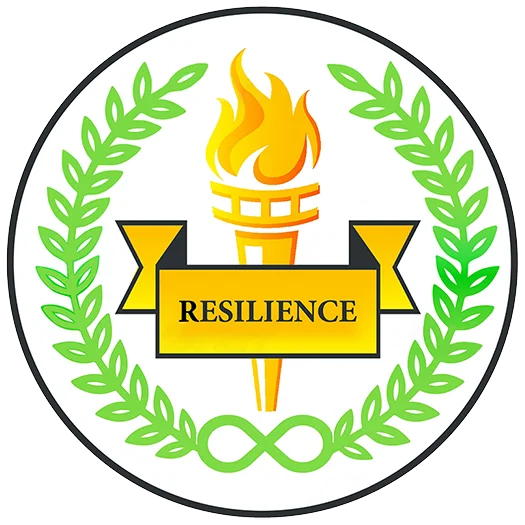Since the outset of recorded history, teachers of all stripes have employed the art of meaningful metaphors. Instead of merely teaching via rote learning, metaphors tap into our creative canvases of the mind; the learner paints the lesson onto memory via personally felt imagery. Meaning, instead of any top-down reliance towards solely formulaic learning, we instead embrace essential metaphors by which to learn anything, so too is this the case for SEL. To be sure, there are many pedagogical metaphors that have long since fallen into disuse in favor of more formulaic lesson plans. However, we can learn and better instruct our curriculum by learning even from dead metaphors as well as ones at large. Despite the labyrinthine nature of metaphoric use, it can all be understood as the process whereby one is taught something completely unfamiliar by wrapping it within something wholly familiar to the individual. Aristotle wrote of metaphor that it, “has clarity and sweetness and strangeness”, “It is a great thing, indeed, to make proper use of poetical forms, as also compounds and strange words. But the greatest thing by far is to be a master of metaphor. It is the one thing that cannot be learned from others, and it is also a sign of genius since a good metaphor implies an intuitive perception of the similarity found in dissimilar wonders.” Hence, we can see metaphors as bridging gaps in the public understandings of SEL instruction found between those learners who want strong logical-based metaphoric use, and those who desire emotionally resonant metaphors. These serve as the chains of being in how we understand ourselves, others, and the world around us, as we see with new eyes in how things can relate back to learning SEL. As such, metaphors are the knots tying language and images to culture and sensory experiences. Moreover, a mounting body of research shows how inexorable metaphoric use has become within the process of building empathy and learning in general. Most useful metaphors in fact do not speak to deep introspection. Rather, linguistic researchers have found that the most potent and reliable are ones based on the elapsing of time. For example, any teacher or coach in their time has used, “at the end of the day, we are moving forward,” this speaks to the idea that tomorrow brings with it improved experiences, as we’re progressing towards goals one day at a time.
Another key facet of metaphors making them universally accessible to learners is that
any meaningful metaphor will register with them for the long term. In thinking through
some of the ways that our relationship to metaphor might be changing, especially in light
of how their use is shifting within educational settings, we can foster SEL learning by
cultivating it within the right bed of metaphors. According to a study by Emily Weinstein
she published along with her team in 2014 indicated such changes. They set out to study a
possible decline in creativity among high-school students by comparing both visual artworks and creative writing collected. The team cited standardized testing as a likely source of this lacking. Moreover, our literariness may indeed be partly responsible for how we develop our empathetic reactions. Foregrounding by nature elicits intricate emotional experiences. In short, metaphor is synonymous with thought and represents, an extension of our consciousness. Naturally, if we are able to establish a nexus of easy to grasp metaphors for SEL, a highway of personal connections will manifest. Further, Sven Birkerts in his
“Changing the Subject: Art and Attention in the Internet Age”, stresses the impetus placed on inwardness and immersion for creating new segments of experiential memory. Which can be better explored by asking: what exactly drives the preeminence of literalism within the current educational paradigm practices widely embraced today? According to his work, it has resulted from our visual big screen-centered culture. In addition, while certain byte-based metaphors which grant insight into the broader culture, they are typically memes serving to be expressive of two-dimensional lives, rather than speaking to a centered life of wholeness. The character of these metaphors is mostly comedic, rather than pedagogical. These metaphors are focused through a one-way mirror; processes requiring no peer feedback in portraying the world through one’s own lens, irrespective of other life experiences.
In our digital age, these types of micro-metaphors are ubiquitous, constantly being used to proliferate one’s viewpoints from more meaningful introspection. The most readily recognized of these cases, being the emoji sentences that are used throughout the social media world. These have been dubbed vessels for what is described as “ambivalent emotions,” people are commenting on stand in things in place of beauty or hope and on the pain and sorrow of a certain passage. In contrast, use of SEL metaphors will elicit a much more robust emotional experience. As is the case that one cannot build empathy merely from reading about lessons on empathy and only through an applied practice of the said lessons one learns. So too then is it for metaphors that are simply offered up as opposed to those which stick with you with the proper emotional developmental weight attached. When SEL will be more accepted as the tide which raises all boats across the country, then it should instill an unending hunger for holistic change through the untapped wellspring of social-emotional learning. Then it may be said to quiet the ravages of self-destructive hunger one could embellish on instead, such as power for the sake of power.
So, like cartographers, we must trace out the contours found within our very own maps for success. This is done in the following ways: blessing students with a rich vocabulary for SEL through metaphors that achieve quick comprehension, as well as root students in intrinsic learning lasting a lifetime. Further, the process remedies the cases as outlined by Emerson of how our fossil poetry in our current educational system has for too long denied to us the full power of poetics, for they are bent on linearized formulaic learning, which preeminence is predicated on an assurance that these fossils are quickly processed away. Further, every bite of the apple of SEL sparks wholesome appreciation for the promising revival of long-lost expressive arts of robust poetics channeled for educational endeavors. At this point, a wellspring of a new educational renaissance could take shape, bringing with it a deeper understanding of SEL through equipment for life metaphors. At which point, we live freely by what we preach in expressing these values day by day via active metaphors to live by. After all, metaphors help us act on empathy drive, which allows us to not only maintain a good degree of happiness by helping others but also start to live through one another’s perspectives, as we are said to take thoughtful time out of every day to walk a mile in someone else’s shoes.

